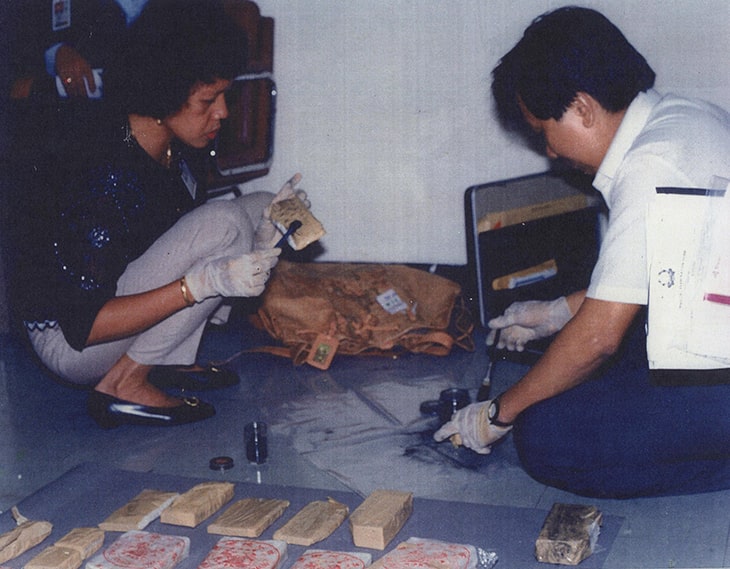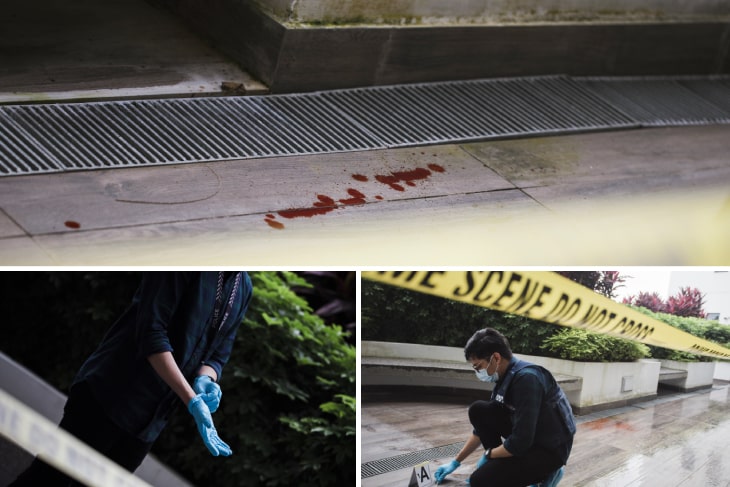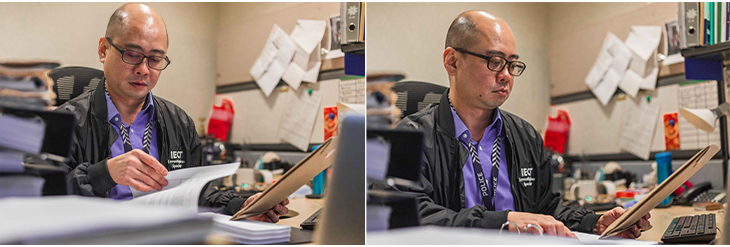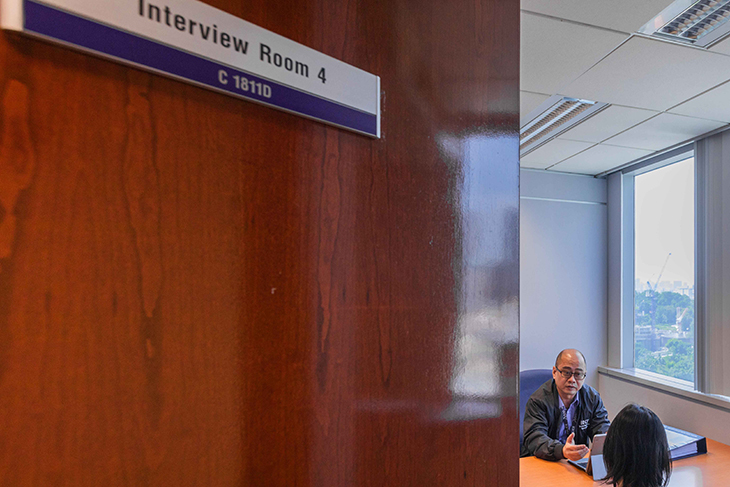
Just as the lady, her two-year-old granddaughter and their helper were alighting from their car, Neo Soon Joo held them at knife point and forced them back into the vehicle. Neo’s accomplice, Au Gan Chye, drove them to a bank, where Neo forced the woman to withdraw $50,000.
Neo fled Singapore but Au’s identity was established after his DNA was found on the gear knob of the victim’s car. He was convicted of kidnapping and sentenced to 10 years’ jail in May 2009.
This kidnap case was one of many different crime cases in which the Singapore Police Force (SPF) identified the perpetrator via a match in the DNA database.
“Before the DNA database was established, fingerprint matches, witness testimony and closed-circuit television (CCTV) footage were the only methods of linking a perpetrator to the crime scene,” said Assistant Superintendent (ASP) Tan Boon Kok, team leader in SPF’s Special Investigation Section (SIS) of the Criminal Investigation Department.

ASP Tan working at his desk.
The SIS investigates crimes such as kidnapping and murders. In his 17 years of investigating crimes, ASP Tan has found the use of DNA to be an extremely useful tool for solving crime.
A Useful Source of Investigative LeadsPolice have been using fingerprinting since 1903 to identify persons present at crime scenes. It is effective, though it has its limits.

Officers dusting a crime scene for fingerprints in the 1980s. PHOTO: SPF
“Fingerprints require a relatively big surface area to obtain a latent print that allows for comparison against SPF’s records, and for it to be accepted by the Court as evidence, there must be sufficient ridges and arches left behind by the culprit,” ASP Tan explained.
“Comparatively, a small speck of blood or saliva should be sufficient to obtain a DNA profile. So, the availability of DNA testing and matching will enable the Police to place a particular person at the scene, thereby increasing our leads to determine the perpetrator of a crime,” said ASP Tan.
Established in 2003, the DNA database stores profiles of blood or buccal swab samples from criminals convicted of registrable crimes. Such crimes include robbery, child abuse, and molest. Persons who received warnings for these crimes will also have their DNA stored in the database. DNA collected from crime scenes are compared against the database to find a match.
This source of investigative leads has improved the odds and speed of identifying the perpetrator.

A forensic officer working at a simulated crime scene. PHOTO: MHA
“In 2009, a salon in Hougang was broken into in the wee hours of the morning,” ASP Tan recounted. “The housebreaker had forced open the glass doors and stole jewellery and cameras. There was no CCTV installed at the salon and my team couldn’t find any apparent leads. DNA swabs were taken from the glass door, which led to us to the culprit through a DNA hit in the database.”
Making a Good Tool Even Better As with any statistical-based concept, a larger database would lead to a higher chance of obtaining a match and identifying the perpetrator of a crime.
However, under the current legal framework, there remains many crimes, such as non-registrable crimes like voluntarily causing hurt, where Police do not have the legal powers to collect DNA from this category of criminals.
“As the retention of DNA information is legally limited to those convicted or warned for registrable offences, we do not have the DNA profiles of persons who are convicted or warned for non-registrable offences,” said ASP Tan.
“However, based on my experience, there were many instances where a criminal committed minor crimes and then escalated to committing more serious ones. Collecting DNA information from such offenders at the first instance, would allow Police access to investigative leads that will maximise our chances of solving the crime,” ASP Tan explained.
ASP Tan recalled a case of extortion and rape in 2013 where he and his team identified the suspect within 36 hours via DNA and CCTV footage. This was because the suspect was previously convicted of housebreaking and his DNA record was retained in the database.

ASP Tan checking a piece of evidence.
Although a DNA match to a sample from a crime scene is an almost irrefutable evidence linking a person to the location, ASP Tan is quick to point out that it is no panacea to solving crime.
Solid detective work to gather supporting evidence through interviews and CCTV footages are still needed to prove that a person has committed a crime.
Still, DNA analysis is an increasingly important tool to cracking cases, even old, unsolved ones.

ASP Tan conducting an interview.
“Over the years, as the database expanded, I saw an increase in the number of previously unsolved cases, such as housebreaking, snatch thefts and robberies, getting solved through DNA analysis. I was glad that we could bring closure to the victims, eventually,” said ASP Tan.
First Reading of the Registration of Criminals (Amendment) BillThe Registration of Criminals (Amendment) Bill was introduced in Parliament for First Reading on 1 August 2022. The Bill proposes amendments to the Registration of Criminal Act (RCA) to:
a) Enhance the collection of deoxyribonucleic acid (DNA) and non-DNA identifying information (e.g. fingerprints and photographs);
b) Introduce procedures to allow the removal of such information recorded in the databases;
c) Expand the prescribed uses of DNA information; and
d) Strengthen the protection of DNA and non-DNA identifying information recorded.
Read the
press release for more information on the Bill.












